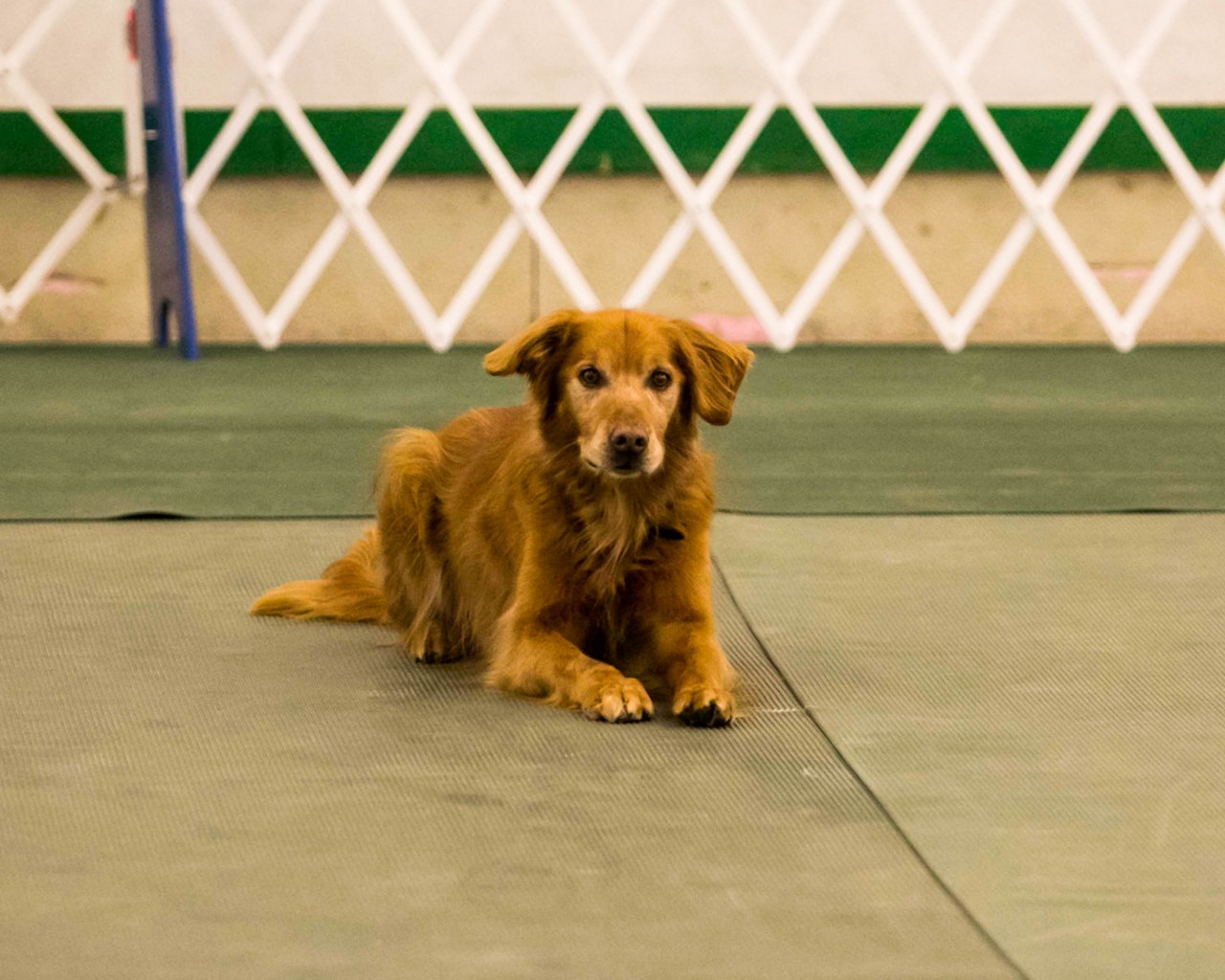Using props for stays isn't required, but it can be incredibly helpful when you're first introducing the concept of stillness. Props provide structure, give dogs a clear physical boundary, and act as reminders to hold position. From platforms to gates and stations, the right prop can make teaching stays easier, clearer, and more effective.
Why Use Props for Stays?
Props help anchor your dog in one spot, making it clear where they should remain. They also make it easier to add distance and handler movement. Many handlers already use stations for down stays, but you can apply the same idea to sit stays, stand stays, and even advanced exercises like signals at a distance.Beyond clarity, props give dogs confidence. A raised bed, platform, or target is easy for a dog to understand: "My job is to stay right here." This reduces mistakes and speeds up learning. For dogs that like to creep forward, shift positions, or anticipate movement, props add just enough structure to build reliability.
Sit Platforms for Sit Stays
Sit platforms give your dog a clear target for their body. Before using one for stays, build value by teaching your dog to get on the platform and sit confidently. Reward heavily at first so the platform becomes a place of reinforcement. Once your dog understands, you can add duration and handler movement.
Here's an example of me using a sit platform with Excel:
Notice how the platform helps him stay centered and focused, even as I move around him. This is especially useful for dogs that tend to "scoot" or shift during sits, since the platform provides physical feedback about staying in place.
Full Body Platforms for Stand Stays
A full body platform works well for stand stays or for keeping your dog in place during position work. The raised surface acts as a natural anchor, helping your dog maintain position while you build distance.
Watch Excel learning the stand stay with a platform here:
For dogs who are used to moving into sits or downs, a full body platform clarifies that "stand" means remain upright and steady. Platforms also help you reward in position—perfect for teaching balance and confidence in the stand.
Front Foot Targets for Position Work
Front foot targets can also support stays by keeping your dog's feet in place. This is especially useful when teaching positions at a distance, since the prop gives the dog a clear reference point.
Here's an example of Excel practicing positions with a front foot target:
This tool works beautifully for sit or stand stays where you want the front feet to stay fixed. By anchoring the front end, you can focus on building distance, clarity, and clean transitions.
Using Gates to Build Distance
Gates provide a physical boundary that prevents creeping and helps your dog succeed as you increase distance. They're especially effective when teaching sit or down stays, or when introducing signal work.
See how a gate helps with distance work here:
Think of the gate as a safety net—it allows you to challenge your dog while minimizing errors. Over time, as your dog gains confidence, you can fade the gate and maintain the behavior without the barrier.
Stations for Everyday Stays
One of the most versatile props for dog stays is a station. A raised bed or cot gives your dog a defined space to remain, whether during training or in daily life. I use stations constantly—when I need to focus on another dog, talk with an instructor, or simply want my dogs to relax.
Here's how I introduce a station to a dog:
At first, reward small interactions like looking at or sniffing the station. Gradually build to paws on, then reward on the station while tossing reset treats to encourage repetition. Over time, your dog will naturally gravitate to the station.
My station criteria are simple: the dog must remain on the platform. They can sit, stand, or lie down, but all four feet must stay on. This flexibility makes stations a realistic, everyday tool for calmness and control.
Getting Started with Props for Stays
If you're interested in props for dog stays, start introducing them now. Choose one or two that fit your training goals and let your dog explore. Keep sessions short, fun, and full of reinforcement. Props aren't required, but they're a valuable tool if your dog struggles with duration, distance, or clarity in their stay.
With consistent training, props transform stays from a source of frustration into a clear, reliable behavior—giving both you and your dog confidence in the process.
